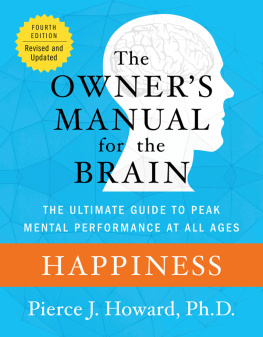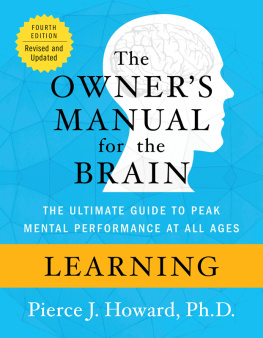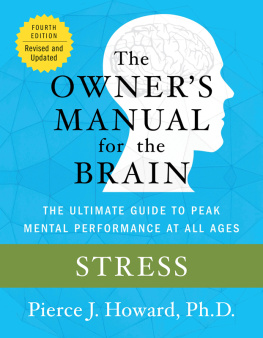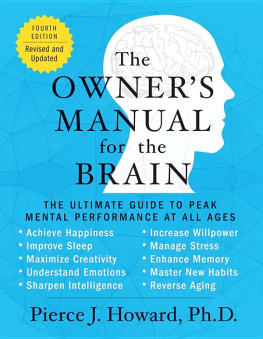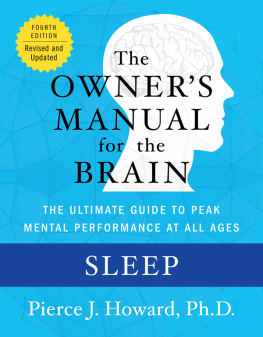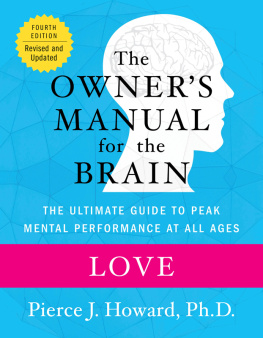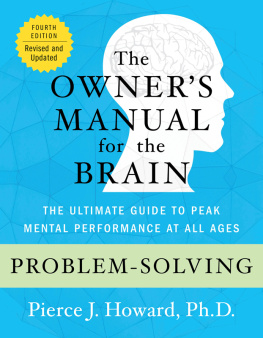A ction may not always bring happiness; but there is no happiness without action. Benjamin Disraeli | The False God |
I n the closing days of the 20th century, Mihalyi Csikszentmihalyi, a University of Chicago philosopher now at Claremont Graduate University in California, wrote an article in American Psychologist (1999) posing the following question: If were so rich, why arent we happy? Citing statistics that showed dramatic rises in standard of living in the U.S., he pointed out that surveys of happiness over the last half of the 20th century failed to show an accompanying increase. Well, the article went on to attempt to explain why increases in wealth failed to affect levels of happiness, but I was unconvinced. The problem is with the way he asked the question.
Lets get it said from the very beginning: Happiness is not, should not, be a goal. The word comes from the Middle English hap and the Old Norse happ, both meaning good luckthe luck of the draw, an advantageous outcome from spinning the Wheel of Fortune. Currently psychologists define happiness as the sustained absence of negative emotions (anxiety, fear, depression) and the ongoing presence of positive emotions (joy and her many manifestations) (Costa and McCrae, 1992). Who are the folks who just happen to be lucky enough to be gifted with this combination of traits? Well, considering the Five-Factor Model of personality (see chapter 30), they comprise the folks who score low on Need for Stability and high on Extraversion. One in three scores low on N, and another one in three scores high on E, so the incidence of naturally happy folks in this world is statistically 1 in 9the probability of scoring both low in N and high in E. That puts about 11 percent of the population in the category of continually happy. Youve met them: the cheerleader who is never down, always bubbly; the salesperson who bounces back quickly from rejection and moves on to the next prospect.
Happiness, then, is not a goal but rather a personality trait that is characteristic of about 11 percent of the population. Happiness is not something to achieveit is a normally distributed matter of temperament. Our goal is not to increase happiness, but rather to ensure that we enjoy our innate degree of happiness, and not more. To the extent that traits are genetically based, this incidence of happiness is immutableand for good reason, evolutionarily speaking. What if the world were composed only of bubbly cheerleaders and effervescent salespeople? Who would worry about the details? Who would churn out the production in solitary silence? The world is builtevolution has assured usout of differing gifts, a splendor of personality diversity. All the world may be a stage, but every stage needs set crew, light and sound booth, writers, producers, and, lets not forget, the essential audience. Oh, and critics!
In a December 2004 poll conducted by Time, 17 percent reported that they were brimming with happiness just about all the time, with another 60 percent saying that they were frequently happy. Lets analyze that statistic. That distribution is roughly consistent with our earlier analysis. The 17 percent who report themselves brimming happily most of the time represents my 11 percent who are in a constant state of happiness, plus some borderline folks. The 60 percent who are frequently happy represent that middle two-thirds of the population who have proportionately more negative emotions than the brimming 11 percent, yet who are still happy with some frequency, and at other times anxious, angry, or depressed. That leaves about of the population (60 percent plus 1117 percent leaves about 25 percent) who do not report themselves as experiencing happiness. Those would be the people who score in the bottom third of E, plus the folks who score in the mid- to high ranges of N, thus having a predominance of negative emotion over positive emotion. The probability of scoring low on E and medium or high on N comes out around 22 percent.
Happiness is good health and a bad memory.
Ingrid Bergman
Heres what this means to me:
1. Happiness is distributed in the population primarily according to our genetics, with (of course) some influence from our environment.
2. Happiness is not a unitary continuum from happiness to despair. Rather, it arises from two continua: one from positive emotionality to lack of positive emotions, and the other from negative emotionality to lack of negative emotionality.
3. Roughly 11 percent of the population tend to be happy pretty much all of the time, and little can happen to change that.
4. The rest of us are somewhere on those two continua: joyful and moderately worrying, joyful and extremely worrying, moderately joyful and worrying, nonjoyful and nonworrying (i.e., lacking either emotion), and so forth.
5. Happiness is not a goal for human development. Rather, it is a characteristic of a minority of the population.
6. Instead of happiness, we need to think in terms of satisfaction, which is what Csikszentmihalyi was studying when he discovered the flow concept (see topic 34.2). Flow is the state of being totally absorbed in what one is doing at the moment, neither bored because the activity is too easy nor frustrated because its too difficult. According to Csikszentmihalyi, one can learn to manage circumstances to stay in this flow state.
7. Happiness is not intrinsically good. Permanent happiness could lead to taking things for granted, the end of progress. It is through a variety of emotional configurations that we as a species have managed to evolve and survive, even prevail, over the constant efforts of nature to destroy us: the worriers seek improvement, the calm ones take the risks, the ebullient ones provide the leadership.
If eight out of nine people are not naturally happy and cant expect to become naturally happy, what do they have to look forward to? Research has identified five modes of being that are as satisfying as emotional happiness. In many cases, these five modes of being are more satisfying than happiness. What each of the five modes has in common with the others is that it induces in us a sense of engagement, a sense of moving forward with a meaningful life. And, as I have written elsewhere (Howard, 2013), these five modes induce positive mood regardless of individual differences in personality traits, mental abilities, values, physical characteristics, or past history. In other words, these five modes of being are good for everyone:
Flow: total absorption in the task at hand (topic 1)
Fit: work that builds on your strengths (topic 2)
Goal Progress: en route to personally meaningful goals (topic 3)
Relationships: friends for fellowship and intimacy (topic 4)
Altruism: service to others (topic 5)
Each of these modes of being makes us feel in gearas though we are getting somewhere and are not stagnant. If we manage to experience all five of these modes, so much the better. The more the merrier, or, at least, the more the better.
The goal of engagement is not sensory pleasure or emotional highs, but rather a total absorption in the moment that, in essence, results in a loss of self-consciousness. It is akin to Aristotles eudaimonia, the pleasure in having done something well, whether a game of sport or the tutoring of a student. Csikszentmihalyi (1990) has identified a state of mind that he calls flow, in which the individual experiences intense satisfaction, losing all sense of time, place, and extraneous physical sensations. In such a state, the individual is so absorbed in the event that nothing else intrudes into awareness. He enumerates eight components of this flow state (pp. 49 ff.):
1. The individual feels she has a chance of successfully completing the event; this requires a sense of having sufficient energy, resources, and skill for the event.
Next page
